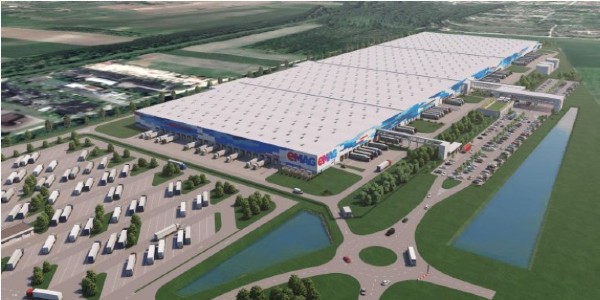September 27, 2023 Industry news
Until recently, there has been a lack of clarity on how the Government and Building Safety Regulator intend to put the legal requirements set out by the Building Safet Act into effect. This has made preparing to adapt a daunting process for many stakeholders across the sector.
A bit of much needed clarity was finally given in August when the government published its long awaited response to the consultation on the new safety regime for occupied higher-risk buildings. As well as providing information on how the new control regime for higher-risk buildings (HRBs) would be implemented, it also covered some of the wider changes to safety regulation for all buildings in England and Wales.
From October 1, many key provisions of the secondary legislation required to support the practical implementation of the Building Safety Act are expected to come into force.
This includes:
- New duty holder roles and responsibilities
- Transitional provisions for higher-risk buildings
- The new gateway regime
- New golden thread regulations
What are the new dutyholder roles and responsibilities?
New duties have been proposed for those who procure, plan, design, manage and undertake building work on any structure covered by The Building Regulations 2010.

Designed to drive and behavioural change in relation to health and safety compliance, the new responsibilities apply to clients, designers and contractors, all of whom will have to ensure that the required changes are embedded into their processes and procedures.
Dutyholders will be required to ensure they have the necessary skills, knowledge, experience and behaviour to carry out the design and building work they are engaged to do. Clients must take all reasonable steps to satisfy themselves that dutyholders are competent, and the dutyholders must refuse to accept an appointment for works they are not competent to deliver.
Dutyholders are required to cooperate and collaborate with other dutyholders, coordinate their work and communicate and provide information to other dutyholders. They will also need to ensure that the necessary arrangements and systems are in place to plan, manage and monitor work to ensure compliance. Interoperable data will be essential to facilitate this and GS1 standards could play a key supporting role.
What are the transitional provisions for higher-risk buildings
Applying to all building works not started by 6 April 2024, the transitional provisions contain new control procedures for:
- the construction of a new HRBs
- Building work to an existing HRBs
- Building work that converts a non-HRB to a HRB (eg. adding additional storeys)
- A material change of use such that it becomes a HRB (eg. Converting a commercial building such as an office block into a residential building)
- Building work to a HRB or proposed HRB such as it becomes a non-HRB
Under the new provisions, stakeholders will need a building control approval before any works commence.
A building regulations compliance statement will also be required and must set out the approach taken during design work and how building standards will be applied. Approvals may be issued with imposed requirements and principle designers must ensure an appropriate frequency of inspections for safety occurrences throughout the construction phase.
A series of gateways designed to strengthen regulatory oversight have also been introduced for HRBs. These requirements of these gateways must be met before any work commences, during construction, on completion and ahead of occupation.

What are the new Gateways?
Gateways are robust stopping points in the design and construction of new HRBs, refurbishments, and other projects involving works on or conversions of buildings into HRBs. Their purpose is to pause a project at various points between inception and completion, so that they can be reviewed and inspected from a building safety perspective.
The new gateway regime consists of three of these “hard stops” that a construction project will need to pass through in order to proceed to construction, completion and then occupation. The gateways are:
- Planning gateway one: applicants must demonstrate that the planning application incorporates thinking on fire safety. Specialist fire safety expertise is provided to local planning authorities on a statutory basis.
- Gateway two (technical design and construction phase): applicants must submit a building control approval application to the BSR before starting construction. The BSR will decide the application within 12. This gateway provides a ‘hard stop’ where construction cannot begin until the BSR has approved the building control application.
- Gateway three: (post construction/final certificate stage): will provide a ‘hard stop’ at which the BSR undertakes final inspections and issues a completion certificate. The applicant must also hand over the Golden Thread to the accountable person to demonstrate compliance and that the building has been constructed in accordance with the approved design. The BSR will decide the application within 12 weeks and residential units cannot be occupied until approval has been given.
Gateway 1 is already in force and gateways 2 and 3 are expected to come into force from 1 October.
What are the new golden thread regulations?
In the context of building safety, the "golden thread" refers to a comprehensive and structured approach to managing building information and data throughout the entire lifecycle of a building, from design and construction through to occupancy and maintenance. It emphasises transparency, accountability, and the need for effective communication among all parties involved in a building's lifecycle to enhance overall safety and reducing the risks associated with building failures or emergencies.
According to the new regulations, the information and documents that must be kept as part of the golden thread include:
- Building control details
- Fire statements
- Plans for HRBs
- Evidence of compliance
- Any notification of emergency repairs
- Documents relating to a controlled change
- Any written report provided to the regulator
- The building certificate (if applicable).
This information must be kept digitally, act as a building's single source of truth and be made available and accessible to all who need it.

The role of GS1 standards
Interoperability will critical for facilitating effective communication, collaboration, and data exchange among the diverse parties involved in a building's lifecycle. This will ensure that information is available when needed, leading to better outcomes in terms of safety, efficiency, and overall building management.
The golden thread of data starts with the ability for everyone, at any stage in the manufacture or usage of construction materials, to easily identify a location, asset or product using a common data language.
GS1 standards are both system and device agnostic, allowing vital data to be shared between systems and organisations to facilitate system-wide interoperability.



